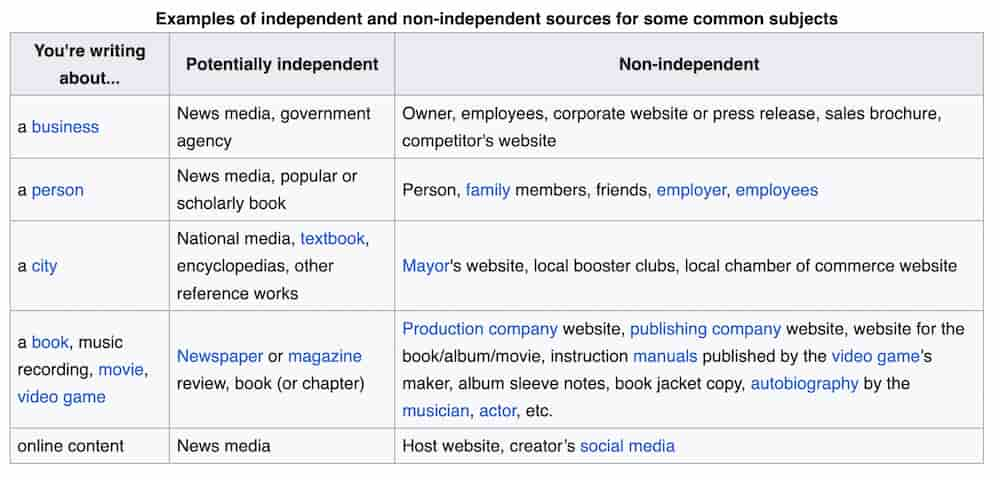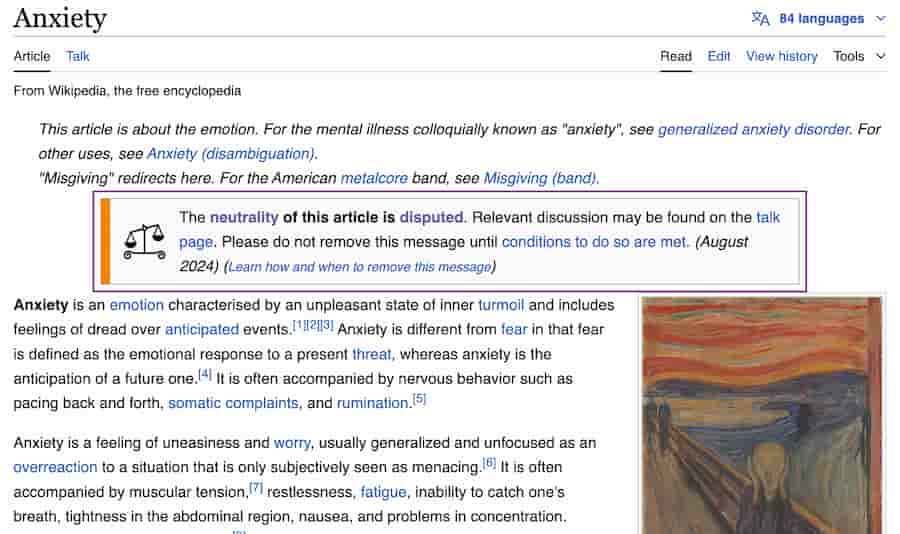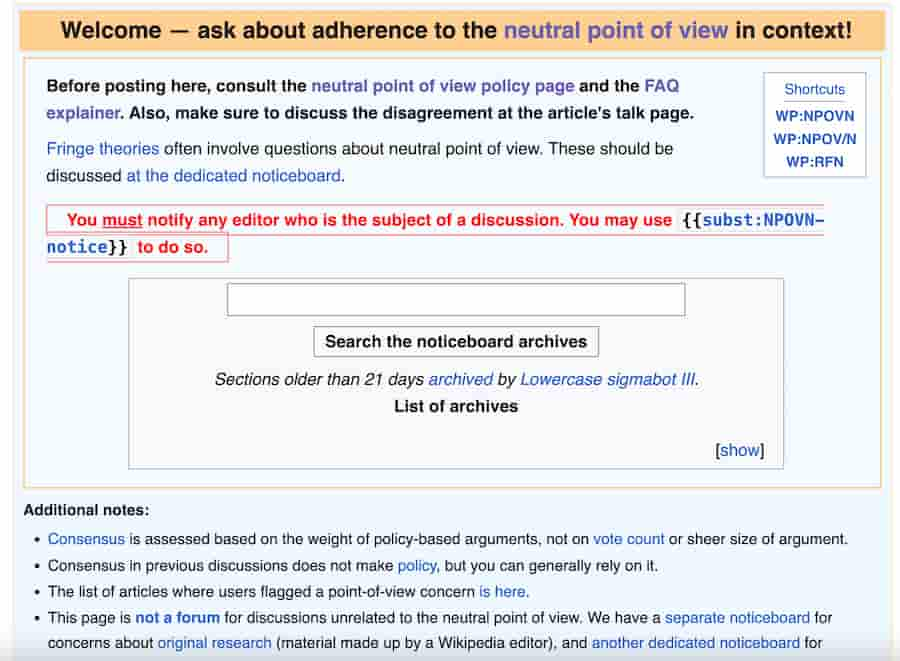Understanding Wikipedia’s NPOV Rules

The Wikipedia NPOV policy is not just good practice – it is what gives Wikipedia its trusted reputation. The NPOV policy works to make sure that all articles present several viewpoints in a balanced and fair manner. This is especially difficult when discussing issues that are divisive or complex. This is why it matters: This is because if it is done wrong, then it affects the credibility of the article and, by extension, the topic of the article.
So, what is at the core of Wikipedia’s neutrality guideline? Let’s look at what NPOV really means, how it is practically applied, and the actual problems that arise. We also touch on how this core policy fits into Wikipedia’s other guidelines, including Verifiability and No Original Research, which are covered in The Ultimate Guide to Wikipedia’s Core Policies.
Key Takeaways
Wikipedia’s NPOV is fundamental to its credibility. Neutrality isn’t optional—it is necessary for readers to trust the information that Wikipedia presents, particularly on controversial subjects.
- Neutral does not mean avoiding controversy, but handling it with care. The editor presents the major views on controversial content based on reliable sources. They do not take sides; they present the balance proportionally.
- Language matters. Even small word choices can create unintended bias – words like ‘groundbreaking’ or ‘controversial’ signal subjective assessments. Wikipedia’s best practice is clear, factual language.
- Reliable sources are central. Wikipedia relies on reputable, published sources. Fringe sources or overly biased outlets can derail neutrality and accuracy.
- Editorial conflict is inevitable, but it is managed through open discussion. Wikipedia expects debates. Editors use article talk pages and structured mediation processes to resolve differences and to ensure that the content remains neutral.
- NPOV is connected to the wider policy framework of Wikipedia. It is not separate from other guidelines, such as Verifiability and No Original Research – it is tightly linked to other core guidelines. Understanding these relationships helps contributors navigate content effectively.
In practice, these principles shape how Wikipedia articles deal with sensitive issues, conflicting points of view and how to maintain a neutral voice. Let’s now go deeper into exactly how Wikipedia defines neutrality.
What is Wikipedia’s NPOV (Neutral Point of View)?
Definition of NPOV
Wikipedia defines its Neutral Point of View (NPOV) as a content policy that ensures articles represent all significant viewpoints of a subject without promoting or supporting any viewpoint. NPOV was introduced by Wikipedia co-founder Jimmy Wales in the early days of Wikipedia in order to address concerns about allowing open editing of the encyclopedia. In time, it was no longer just a rule, but a central ethos that helped Wikipedia become a credible and trusted resource.
Core Principles of NPOV
At its core, neutrality means presenting the main viewpoints without favoring particular points of view or undervaluing certain viewpoints. This is particularly important for business leaders or marketers who are managing content about their organizations because it means that topics, whether it is a contentious decision or a public criticism, will get fair and balanced treatment.
- One practical aspect of NPOV is the clear separation of fact and opinion. Any subjective assertions (“The company has been unfair”) must be attributed to reputable third-party sources, not stated as fact. For example, describing a company’s sustainability strategy neutrally could be done by saying, “According to XYZ news, critics claim the company’s pledges fall short,” with proper citation. This approach informs readers of differing views without inserting editorial judgment.

- Another practical dimension is verifying every claim with solid sources. Wikipedia contributors follow clear guidelines laid out in its broader policies, like “Verifiability” and “No Original Research.” This ensures content is not anecdotal or speculative but based purely on publishable evidence.
The application requires a proper proportion. The platform should not let unsupported radical ideas gain precedence over well-established facts. An article discussing climate change dedicates its main content to the scientific consensus about climate change while dedicating minimal space to climate denial theories.
For business leaders and executives looking to manage their Wikipedia presence, these standards give clear boundaries: At Reputation X, we constantly tell our clients that Wikipedia is not a promotional platform.
Examples of How NPOV is Applied
Representing Contrasting Views
Neutrality is clear when representing opposing viewpoints. Articles that accurately present scientific evidence and include only valid disputes between theories effectively follow NPOV guidelines. This also applies to historical events, for example, the description of World War II and the Hiroshima bombing includes factual representations of different views that are proportionate to their reliability.
To maintain neutrality, writers need to base their statements on credible sources, including peer-reviewed research and respected newspapers. The evidence-first method ensures that articles maintain their informative function instead of turning into persuasive material.
Handling Disputed Topics
For controversial or polarized topics such as U.S. healthcare policy, politics, corporate scandal and the like, the NPOV guideline does not require equal coverage for every claim. Wikipedia requires contributors to present information based on verified prominence in proportionate measures. The healthcare policies of an institution should feature content based on medical journals and policy institutes, but include only brief references to minor fringe arguments. Often, if an event is controversial, it will get its own Wikipedia article rather than become the main content of the person or organization responsible for it. Article need to present important criticisms at the same level as company responses while avoiding conflicts of interest. It’s a delicate line to walk.
NPOV: Tone and Language in Writing
Neutrality requires specific tone levels to maintain its position. Wikipedia requires straightforward factual language without any promotional or subjective adjectives. The neutral approach to public figures presents their relevant events or statements without subjective interpretation and always includes reliable sources.
When describing corporate achievements, avoid using terms such as “market leader” or “visionary CEO.” is generally a bad idea. It doesn’t sound neutral and statements like that are often deleted from the Wikipedia article. It is possible to add achievements in a neutral way though, here is an example using Dell Computers’ Wikipedia page.

This practice offers professional marketers and brand managers an opportunity to adapt their strategy through clear, evidence-based, objective messaging instead of persuasive language. The outcome produces material that is both more precise and trustworthy.
Challenges of Maintaining NPOV
The most common errors consist of unintentional editorializing through the use of words like “excellent” or “poorly executed” and presenting minor viewpoints or unsupported theories at disproportionate lengths. This type of language is often a giveaway that there might be a Conflict of Interest happening on the page. Maintaining NPOV should be a top priority because biased articles are subject to the NPOV dispute tag. Once this tag is added to a page, it can be difficult to remove.

These processes, which rely on Wikipedia’s supporting rules for sourcing and original research, strengthen neutrality standards in heated discussions to achieve more objective, trustworthy content.
Why NPOV Matters on Wikipedia
Impact on Credibility
The NPOV guideline on Wikipedia creates a direct impact on the credibility of the website as a reliable information source. Marketing leaders and executives benefit from Wikipedia articles written neutrally since these articles strengthen their public image by avoiding promotional content and defamatory statements, which build long-term trust.
Wikipedia’s reputation suffers when articles contain biased content, either through a promotional or an overly critical tone. Professionals who manage Wikipedia presence need to make transparent factual contributions to preserve the credibility of both Wikipedia and their organization.
Connection to Wikipedia’s Core Policies
The three principles of Neutrality, together with Verifiability and No Original Research, create a robust framework for building evidence-based articles. A tech firm cannot describe a new product as “the industry’s best solution” without attributing the claim to a respected third-party source, according to neutrality requirements. The violation of neutrality guidelines occurs when articles present original analysis or unsupported conclusions without published sources.
Those who represent corporations need to understand these linked policies to handle expectations while confidently editing Wikipedia content, which results in a transparent and accurate digital presence.
Tools and Best Practices for Adhering to NPOV
Choosing Reliable Sources
The foundation of neutral content relies on high-quality sources. Reliable sources include respected journalism, established organizations, and peer-reviewed studies. The community discussions assist in determining the acceptable standards when information is ambiguous.
Reviewing for Compliance
The following straightforward evaluation procedures support neutrality in content creation and editing:
- Clear attribution of subjective claims must reference reliable sources.
- Balance viewpoints proportionally.
- Remove the subtle biases that exist in adjectives and qualifiers such as “highly respected” and “frequently criticized.”
The process of team collaboration enables better results. Third-party neutral editors provide essential feedback specifically regarding sensitive company stories.
Monitoring Content Continuously
Even neutral articles can drift off-course. The Watchlist alert feature of Wikipedia alerts users about concerning edits so they can take quick action when someone has skewed the narrative of the article in a non-neutral way. The Neutrality Noticeboards enable proper methods to address ongoing content problems.

Any company that wants to maintain a responsible Wikipedia image management needs effective monitoring with transparent team collaboration.
Conclusion
Maintaining Wikipedia’s neutrality demands continuous attention alongside both active monitoring and sincere objective viewpoints. Credibility emerges from neutrality, which applies to people and organizations together with Wikipedia. Professionals handling company profiles or industry topics on Wikipedia must demonstrate transparency while maintaining honesty and showing a willingness to accept multiple viewpoints fairly. A balanced reputation develops through authentic, evidence-based methods instead of artificial spin creation.
These values exceed Wikipedia standards because they demonstrate essential principles that we should adopt in our leadership practices and communication methods. Neutrality establishes conditions that allow both credibility and trust to flourish. The objective remains valuable enough to strive toward principles worth internalizing in our approach to leadership and communication. Neutrality creates space for credibility and trust. That’s a goal worth aiming for.
